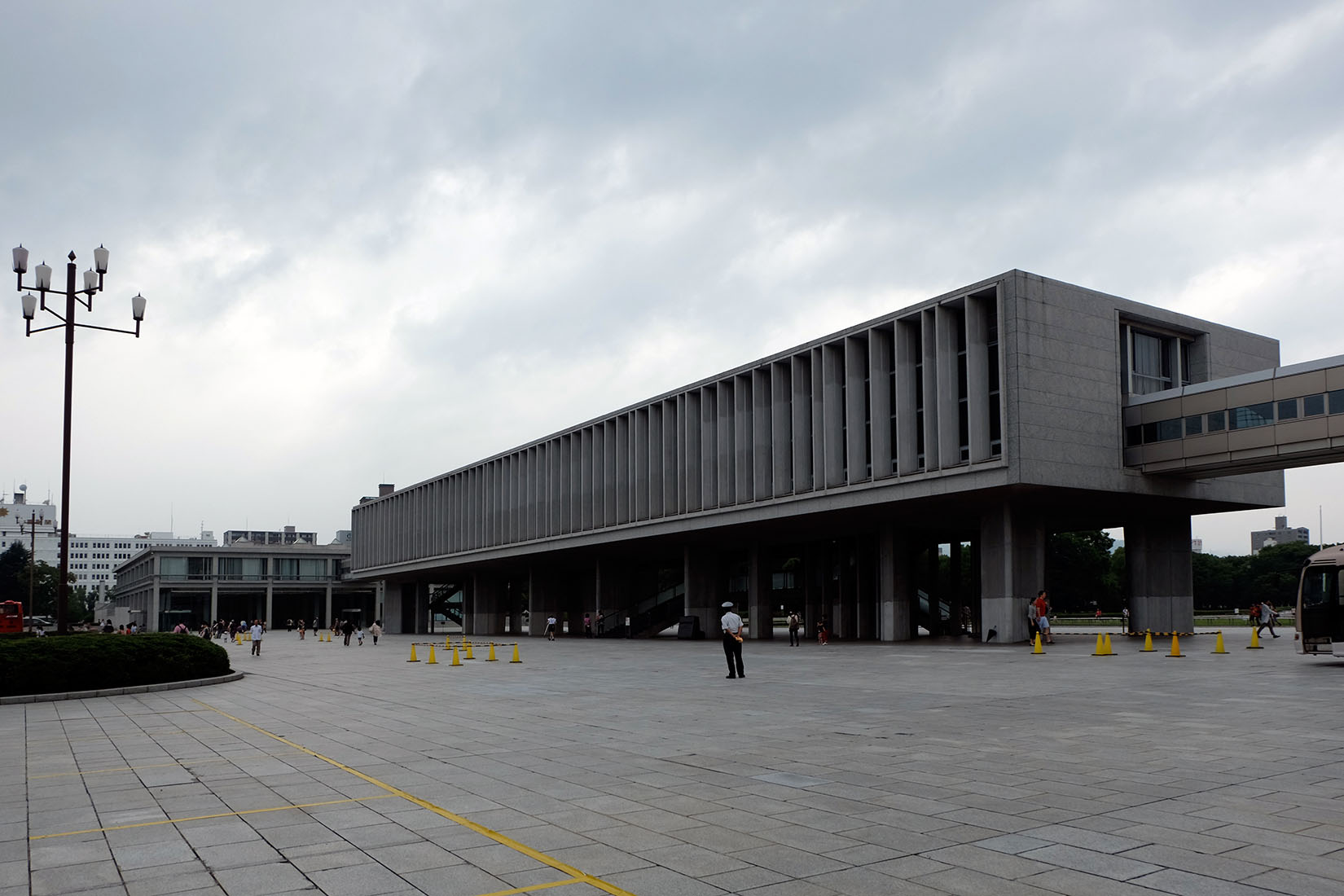 |
 |
 |
 |

Hiroshima Memorial Museum
Heiwa-Kinen Koen, 1-2, Nakajima-cho
1955
The
Hiroshima Peace Center and Memorial Museum is the first major project
by Kenzo Tange. At the same time it is considered to be the first
internationally
recognized representative of postwar Japanese architecture. Work on the Peace Centre commenced in 1950. The huge complex is centered on
the Museum building and acts as a landmark monument. In 1949 Kenzo Tange won the national competition for the project to commemorate the victims
of the atomic bomb. As a consequence, he received the commission to design and build his urban scheme. In the initial design the Hiroshima Peace Memorial Museum
was dominated by adjoining utility buildings. These utility buildings were to be linked with the museum by high-level walkways. This concept was then refined
by the architect to place the museum prominently at the centre, separated from the utility buildings. The complex is centred around the building that houses
the information about the atomic explosion. The large horizontal volume of the Museum is elevated on 6.5 meter high pilots, so that it acts as the gateway
to the entire memorial park behind it. The elevated primary museum floor is accessible via a free-standing staircase.
The museum is constructed from bare reinforced concrete and has a skeletal presence. The rhythmical facade comprises a repetition of vertical elements.
When built, the structure resembled a ruinous building like the Atomic Dome in the background. The interior is finished with rough concrete as well.
Kenzo Tange indended to keep the surfaces plain so that nothing could distract the visitor from the contents of the exhibits. The combination of influences
of Le Corbusier's powerfully plastic architecture with the traditional, elevated Japanese structures initiated a new trend in Japanese architecture.
As many other buildings of exposed concrete from the 1950s and 1960s, the Memorial Museum had to be renovated. During this process,
the exposed surfaces were refinished, and the building lost much of its original power. The building is considered by Docomomo-Japan as one
of the 100 most important representatives of modern architectur in Japan.
recognized representative of postwar Japanese architecture. Work on the Peace Centre commenced in 1950. The huge complex is centered on
the Museum building and acts as a landmark monument. In 1949 Kenzo Tange won the national competition for the project to commemorate the victims
of the atomic bomb. As a consequence, he received the commission to design and build his urban scheme. In the initial design the Hiroshima Peace Memorial Museum
was dominated by adjoining utility buildings. These utility buildings were to be linked with the museum by high-level walkways. This concept was then refined
by the architect to place the museum prominently at the centre, separated from the utility buildings. The complex is centred around the building that houses
the information about the atomic explosion. The large horizontal volume of the Museum is elevated on 6.5 meter high pilots, so that it acts as the gateway
to the entire memorial park behind it. The elevated primary museum floor is accessible via a free-standing staircase.
The museum is constructed from bare reinforced concrete and has a skeletal presence. The rhythmical facade comprises a repetition of vertical elements.
When built, the structure resembled a ruinous building like the Atomic Dome in the background. The interior is finished with rough concrete as well.
Kenzo Tange indended to keep the surfaces plain so that nothing could distract the visitor from the contents of the exhibits. The combination of influences
of Le Corbusier's powerfully plastic architecture with the traditional, elevated Japanese structures initiated a new trend in Japanese architecture.
As many other buildings of exposed concrete from the 1950s and 1960s, the Memorial Museum had to be renovated. During this process,
the exposed surfaces were refinished, and the building lost much of its original power. The building is considered by Docomomo-Japan as one
of the 100 most important representatives of modern architectur in Japan.
